Thorpeness |
|
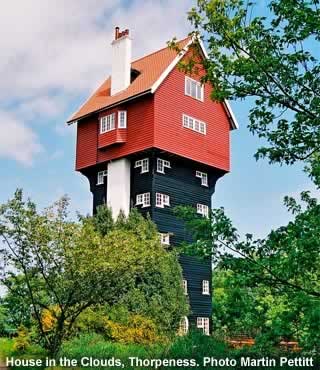 |
|||
The weirdest village in England |
||||
|
||||
In the late 19th century, Thorpeness was nothing more than a small fishing hamlet - but that was before a wealthy Scotsman called Glencairn Stuart Ogilvie came along. After buying the village and its surrounding land, he set about transforming the place into a strange fantasy world, where he could holiday with his family and friends. |
||||
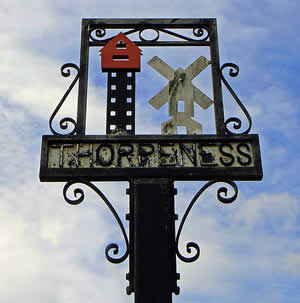 Thorpeness Village Sign |
||||
The first step was to erect lots of new buildings, from small houses to to a large library. Everything was done in mock Tudor and Jacobean styles. The structures might be several centuries too late, but what they lack in authenticity, they make up for in attractiveness. |
||||
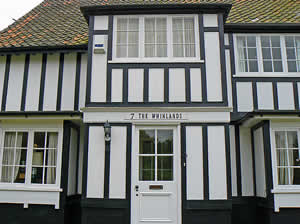 A Tudor style house in Thorpeness |
||||
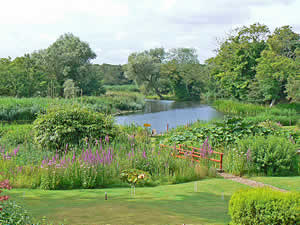 The garden at hotel and golf course |
||||
The only eyesore was the water tower. Ogilvie decided to hide this ugly construction by turning it into a house. It looks like a normal home - except it's six storeys up in the air. The building's known as the House in the Clouds, and it's the biggest symbol of Thorpeness' persistent strangeness. Nowadays it's the most unique holiday home in Britain, and it's available for rent. Altogether it contains five bedrooms, various bathrooms, a dining room and a kitchen. 68 stairs lead up to the games room on the very top floor, which provides wide views over Suffolk's countryside. |
||||
Back when the House in the Clouds was a water tower, its water was pumped upwards by Thorpeness Windmill. It's still standing, just next door, and during the summer months it's open to the public for a few hours a day. Its white wooden walls make it the second most eye-catching structure in town. |
||||
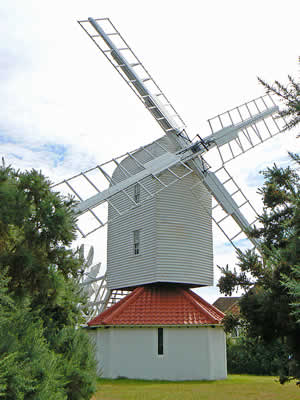 The Mill |
||||
South of here is the Meare, Thorpeness' lake. A century ago this was nothing more than a flat strip land, but Ogilvie decided to dig it out and fill it with water. Just the thought of such a huge task tires most people out, but the workforce managed to complete all 60 acres entirely by hand. Visitors can rent boats, and drift across the surface. It's only one metre deep, so it's calm and safe. Some of the rental craft have been here since the lake's opening day. They're named after the tireless workers that built it in the first place, as a tribute to their achievement. |
||||
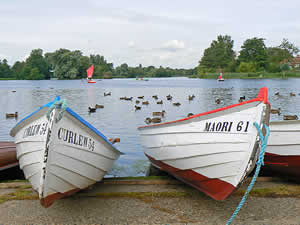 Thorpeness Meare |
||||
Scattered across the Meare are various landing bays, coves and islands. The names of most locations reference the stories of Peter Pan. Their creator, the author J. M. Barrie, was a personal friend of the Ogilvie family. Some of the islands even have recreated versions of places in Neverland, where children are encouraged to play. There's the pirates' lair, Wendy's house and Captain Hook's castle. You might also spot an alligator lurking near the shore. Don't worry, this is another reference to Peter Pan - it's not real! |
||||
Every August, the Meare hosts Thorpeness Regatta. At the same time, the nearby town of Aldeburgh holds their annual carnival. The twin events draw in hundreds of people from all over the country. During the day are a selection of hotly-contested boat races. There are events for children too, so they can join in. When darkness falls, the racing craft are replaced by an assortment of gaudily-decorated vessels, which sail across the water as part of a nautical parade. Everything's capped off with a thundering fireworks display. |
||||
Thorpeness is often described as "the weirdest village in England", and you can see why. Still, for the 400 permanent residents, this is home. Some of the families that live here are descendents of the craftsmen who helped build it in the first place. The Ogilvie family have sold a lot of the land, but they're still regular visitors here. During the summer, when the population swells by four or five times, they get to show off the product of their ancestors' strange imagination. |
||||
|
Pocket Britain is optimised for use on a smartphone or tablet with internet access. All content is subject to copyright. All reasonable methods have been used to ensure information supplied is accurate at the time of publication. However, it is advisable to check information before relying on it. Privacy Policy |